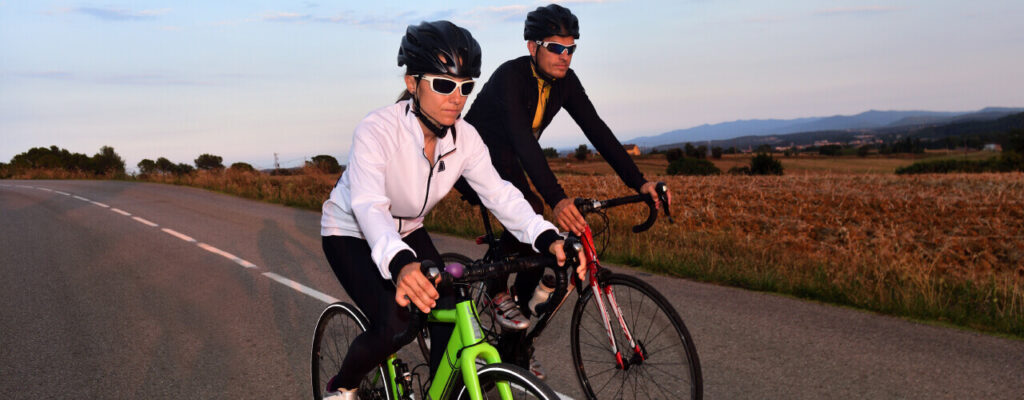How Can Cycling Help With Recovery?
Cycling can aid recovery by improving circulation and reducing stress, enhancing physical and mental well-being. It boosts endorphins, promotes muscle repair, and speeds up the healing process, making it an effective form of exercise post-injury or illness.
Cycling is beneficial for recovery as it increases blood flow to injured areas, delivering essential nutrients and oxygen for faster healing. The low-impact nature of cycling also helps reduce strain on joints and muscles, allowing for gentle rehabilitation without causing further damage.
Additionally, the rhythmic motion of pedaling can help improve range of motion and flexibility in injured areas. Overall, incorporating cycling into a recovery plan can speed up the healing process and improve overall well-being.

Credit: nestorphysicaltherapy.com
Physical Benefits Of Cycling
Cycling offers a multitude of physical benefits that can aid in recovery and improve overall well-being. It is a low-impact exercise that has been shown to help with both physical and mental recovery. Let’s explore the physical benefits of cycling in more detail, focusing on muscle strength and cardiovascular health.
Building Muscle Strength
Cycling helps in building muscle strength by engaging various muscle groups, including the quadriceps, hamstrings, calves, and glutes. The repetitive motion of pedaling against resistance can lead to strengthened leg muscles, contributing to overall body strength and endurance.
Improving Cardiovascular Health
Cycling has a positive impact on cardiovascular health by increasing heart rate and improving circulation. Regular cycling sessions can help reduce the risk of heart disease and stroke, as well as improve overall cardiovascular fitness. It also aids in lowering blood pressure and improving blood lipid profiles, promoting a healthier cardiovascular system.

Credit: www.amazon.com
Mental Benefits Of Cycling
Cycling offers a range of mental benefits, including aiding in recovery. Through the active nature of cycling, it can help reduce stress and improve mood by releasing endorphins, promoting better mental well-being for individuals on their recovery journey.
Reducing Stress And Anxiety
Cycling reduces stress and anxiety by engaging the mind in the present moment.Enhancing Mood And Mental Well-being
Regular cycling enhances mood and mental well-being through the release of endorphins. Cycling is not just a physical activity; it offers numerous mental benefits as well.Reducing Stress And Anxiety
Cycling helps in reducing stress and anxiety by allowing you to focus on the present moment.Enhancing Mood And Mental Well-being
One of the key benefits of cycling is enhancing mood and mental well-being, thanks to the release of endorphins.Cycling As A Rehabilitation Exercise
Cycling as a Rehabilitation Exercise:
Low-impact And Joint-friendly
Cycling is gentle on the joints and suitable for individuals recovering from injuries.
Improving Range Of Motion And Flexibility
Cycling helps increase flexibility and enhance the range of motion post-injury.
Cycling For Injury Recovery
When it comes to injury recovery, cycling can be a highly effective and enjoyable form of rehabilitation. Incorporating cycling into your recovery plan can have numerous benefits, aiding in faster healing and tissue repair as well as promoting blood circulation.
Faster Healing And Tissue Repair
- Cycling helps to mobilize injured joints and muscles, promoting faster healing and tissue repair.
- The low-impact nature of cycling reduces stress on the joints, allowing for gentle movement that can aid in the healing process.
- Engaging in regular cycling can help to strengthen muscles, promoting stability around the injured area and supporting the recovery process.
Promoting Blood Circulation
- Cycling promotes increased blood flow to injured areas, delivering vital nutrients and oxygen essential for the healing process.
- The consistent movement of cycling helps to prevent blood clots and reduce swelling, aiding in the overall recovery process.
- By enhancing blood circulation, cycling can assist in the removal of metabolic waste products from injured tissues, promoting a faster recovery.
Cycling As A Part Of Holistic Recovery
When it comes to overcoming challenges and finding balance in recovery, incorporating activities that promote physical and mental well-being is crucial. Cycling, as a holistic approach to recovery, can play a significant role in helping individuals navigate their journey towards a healthier lifestyle. Apart from the physical benefits it offers, cycling fosters social engagement and community support while improving overall quality of life.
Social Engagement And Community Support
Cycling is more than just a form of exercise; it brings people together, creating opportunities for social engagement and community support. Joining cycling groups or participating in cycling events allows individuals to connect with like-minded individuals who share similar interests and goals. This sense of belonging contributes to a strengthened support network, providing encouragement, camaraderie, and shared experiences. Additionally, the regular interaction with fellow cyclists promotes social integration and reduces feelings of isolation, often experienced during the recovery process.
Improving Overall Quality Of Life
Cycling offers numerous benefits that can significantly improve an individual’s overall quality of life. The physical activity involved in cycling releases endorphins, which are known as the body’s natural ‘feel-good’ chemicals. This release of endorphins helps reduce stress, anxiety, and depression, commonly associated with the challenges of recovery. Furthermore, cycling promotes cardiovascular fitness, strengthens muscles, improves coordination, and supports weight management. These physical improvements not only contribute to better physical health but also boost self-confidence and self-esteem.
Moreover, cycling provides individuals with the opportunity to explore nature, which has been proven to have positive effects on mental health. Being out in nature, surrounded by greenery, fresh air, and scenic roads, can reduce stress levels and increase feelings of relaxation and tranquility. The meditative aspect of cycling allows riders to clear their minds, fostering mental clarity and mindfulness.
In conclusion, incorporating cycling as a part of holistic recovery can produce significant positive changes in an individual’s life. From the social engagement and support it offers to the physical and mental well-being improvements, cycling serves as a powerful tool helping individuals navigate their recovery journey towards a healthier and more balanced life.

Credit: blog.fitbit.com
Frequently Asked Questions For How Can Cycling Help With Recovery?
How Does Cycling Promote Recovery After Workouts?
Cycling helps improve blood circulation, reducing muscle soreness and aiding muscle repair after intense workouts.
Can Cycling Help With Faster Post-workout Recovery?
Engaging in cycling activates the lymphatic system, which helps remove waste products from the muscles, resulting in faster post-workout recovery.
What Makes Cycling An Effective Recovery Exercise?
Cycling is a low-impact exercise that increases oxygen and nutrient flow to the muscles, enhancing recovery and reducing the risk of injury.
Conclusion
Cycling is an effective way to aid in recovery, both physically and mentally. It promotes blood circulation, reduces muscle soreness, and improves overall well-being. By incorporating cycling into your recovery routine, you can enhance your healing process, manage stress, and increase your endurance.
So, hop on your bike and take full advantage of its healing benefits.




